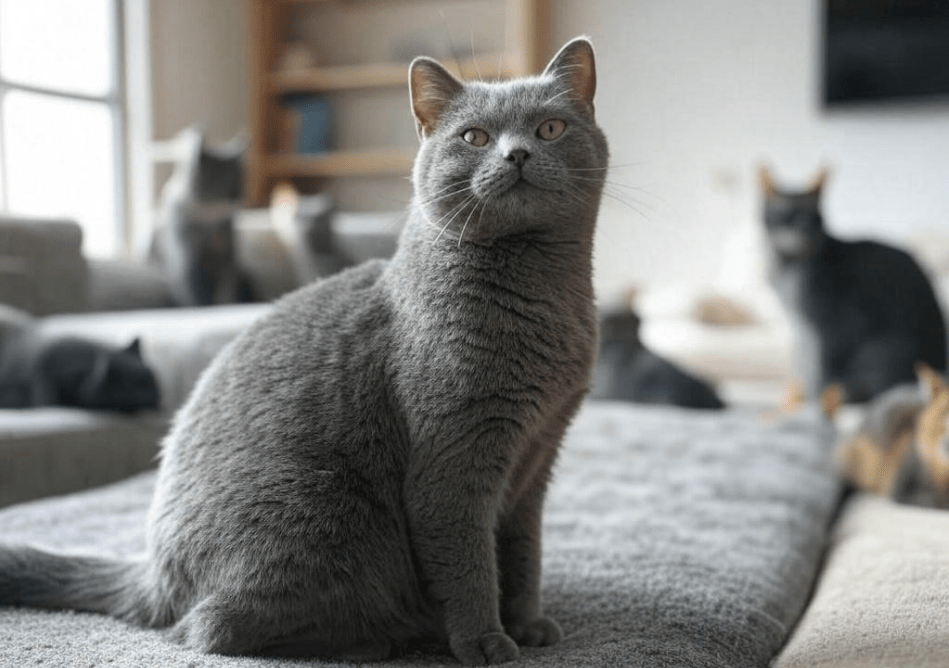
Owning a Domestic Shorthair cat is a rewarding experience, as these versatile and affectionate felines bring joy to any household. However, creating a Domestic Shorthair-friendly home on a budget requires thoughtful planning to ensure your cat’s safety, comfort, and happiness without breaking the bank. This comprehensive guide provides practical, cost-effective solutions to transform your home into a feline paradise, covering everything from safe spaces to enrichment and grooming. Whether you’re a new cat parent or a seasoned owner, these budget-friendly tips will help you create an ideal environment for your Domestic Shorthair.
Why a Domestic Shorthair-Friendly Home Matters
Domestic Shorthair cats are known for their playful, curious, and adaptable nature. With their short, dense coats and diverse personalities, they thrive in environments that cater to their physical and emotional needs. A cat-friendly home:
Ensures Safety: Protects your cat from household hazards like toxic plants or exposed wires.
Promotes Enrichment: Provides mental and physical stimulation to prevent boredom and stress.
Supports Health: Encourages proper grooming, nutrition, and litter box habits.
Reduces Stress: Offers safe spaces for relaxation, especially for sensitive or anxious cats.
Creating such a space doesn’t require expensive purchases. With creativity and resourcefulness, you can craft a Domestic Shorthair-friendly home that’s both affordable and functional.
Budget-Friendly Essentials for a Domestic Shorthair-Friendly Home
Below are practical, low-cost strategies to make your home safe, stimulating, and comfortable for your Domestic Shorthair cat. Each section includes actionable tips and DIY ideas to keep costs down while maximizing your cat’s well-being.
1. Creating Safe Spaces
Domestic Shorthairs are curious explorers, so ensuring your home is safe is the first step to making it cat-friendly.
Eliminate Household Hazards
Toxic Plants: Remove or relocate plants like lilies, pothos, or aloe, which are toxic to cats. Replace them with cat-safe options like spider plants or catnip, which you can grow from seeds for under $5.
Cords and Wires: Bundle exposed electrical cords with cable organizers (available for $2–$5 at discount stores) or cover them with PVC piping cut to size.
Small Objects: Store small items like rubber bands, hair ties, or coins in sealed containers to prevent choking hazards.
Chemicals: Keep cleaning products, antifreeze, and medications in locked cabinets or high shelves.
Budget Tip: Conduct a “cat’s-eye view” walkthrough of your home to spot hazards. Use painter’s tape (under $3) to secure loose cords temporarily.
Secure Windows and Balconies
Domestic Shorthairs love perching near windows, but open screens or balconies pose falling risks.
DIY Window Screens: Reinforce weak window screens with pet-proof mesh (around $10 for a roll online). Attach with adhesive Velcro strips for easy installation.
Balcony Netting: Purchase cat-safe netting (about $15 for 10×10 feet) to enclose balconies. Secure with zip ties or rope for a sturdy barrier.
Budget Tip: Check thrift stores for secondhand pet netting or repurpose sturdy garden netting for balconies.
Provide Hiding Spots
Cats feel secure with cozy hiding spots, especially during stressful events like visitors or loud noises.
DIY Cardboard Hideouts: Cut doorways into old cardboard boxes and stack them to create a multi-level hideout. Line with an old towel or blanket for comfort.
Repurposed Furniture: Place a blanket inside a bottom shelf or under a bed to create a low-cost “cat cave.”
Budget Tip: Ask local stores for free cardboard boxes or use moving boxes from friends to craft hideouts.
2. Affordable Enrichment and Play Areas
Domestic Shorthairs are active and intelligent, requiring mental and physical stimulation to stay happy. Enrichment doesn’t need to be expensive—many toys and activities can be made at home.
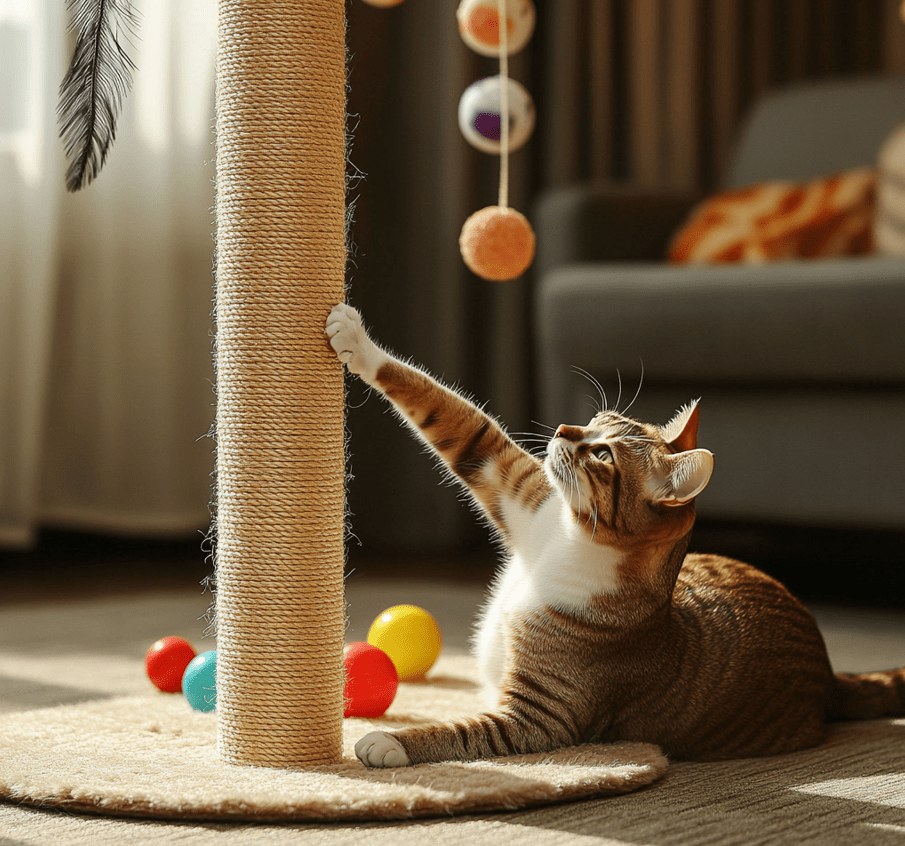
DIY Cat Toys
Paper Ball Toys: Crumple up scrap paper or aluminum foil into balls for batting. Add a string for dragging games.
Cardboard Scratching Posts: Cut corrugated cardboard into strips, stack, and glue them into a rectangular post. Secure with duct tape for durability (total cost: ~$5).
Treat Puzzle: Poke holes in an empty plastic bottle and fill with kibble. Your cat will roll it to release treats, providing mental stimulation.
Budget Tip: Save packaging materials like bubble wrap or packing paper for impromptu toys. Check dollar stores for feather wands or laser pointers under $2.
Vertical Spaces
Domestic Shorthairs love climbing and perching, which satisfies their instinct to survey their territory.
DIY Cat Shelves: Repurpose wooden crates (often free from local markets) or old bookshelves. Sand edges and secure to walls with inexpensive brackets ($1–$3 each).
Cardboard Cat Trees: Stack and glue cardboard boxes into a multi-level structure. Cover with carpet scraps (ask flooring stores for free remnants) for texture.
Budget Tip: Visit thrift stores for sturdy shelves or crates, often priced at $5–$10. Use old towels or T-shirts as shelf coverings instead of buying fabric.
Interactive Play
Engage your Domestic Shorthair with low-cost interactive activities:
Laser Pointer Games: A laser pointer (under $3 online) provides endless chasing fun. Always end with a physical toy to avoid frustration.
Hide-and-Seek: Hide treats or kibble around the house for your cat to find, encouraging natural hunting instincts.
Budget Tip: Rotate toys weekly to keep them “new” and prevent boredom without buying more.
3. Budget-Friendly Grooming Solutions
Regular grooming keeps your Domestic Shorthair’s coat healthy, reduces shedding, and prevents hairballs, which are common in this breed.
Affordable Grooming Tools
Soft Bristle Brush: Purchase a soft nylon brush (around $5 at pet stores or online) to gently remove loose fur without irritating the skin.
DIY Grooming Glove: Sew soft rubber nubs (cut from an old rubber mat) onto a cheap work glove for a homemade grooming glove (~$3).
Flea Comb: A fine-tooth comb (under $4) removes fleas, dander, and debris, especially during flea season.
Budget Tip: Check discount retailers like dollar stores or online marketplaces for pet brushes priced at $2–$5. Clean tools with soap and water to extend their life.
Grooming Routine
1.Brush your Domestic Shorthair 2–3 times a week to minimize shedding.
2.Use a damp cloth for spot-cleaning instead of frequent baths, which can dry out their skin.
3.Trim nails every 2–4 weeks with basic pet nail clippers ($3–$5).
Budget Tip: Repurpose an old toothbrush (sterilized) for gentle face grooming or to clean hard-to-reach areas.
4. Cost-Effective Litter Box Setup
A clean, accessible litter box is essential for your Domestic Shorthair’s comfort and hygiene.
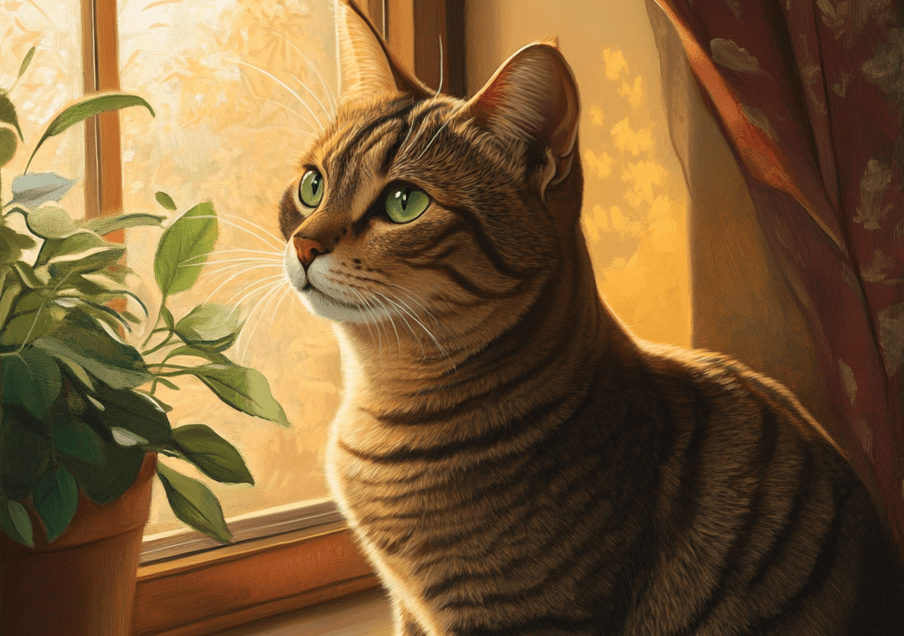
Affordable Litter Boxes
Basic Open Box: Purchase a standard plastic litter box (around $5–$10 at discount stores). Open boxes are easier to clean and preferred by many Domestic Shorthairs.
DIY Litter Box: Repurpose a large plastic storage bin (under $5) by cutting an entry hole. Sand edges for safety.
Budget Tip: Look for secondhand litter boxes at thrift stores or garage sales, sanitizing thoroughly before use.
Budget Litter Options
Clumping Clay Litter: Choose a dust-free, unscented clumping litter (around $8 for 20 lbs at big-box stores) to minimize respiratory irritation.
DIY Newspaper Litter: Shred old newspapers and soak in water with a drop of dish soap. Drain, dry, and use as a free alternative (best for temporary use).
Budget Tip: Buy litter in bulk during sales or use store loyalty programs to save. Scoop daily to extend litter life.
Placement and Maintenance
1.Place the litter box in a quiet, low-traffic area, away from food and water bowls.
2.Provide one litter box per cat, plus one extra (e.g., two boxes for one cat).
3.Clean daily and replace litter weekly to prevent odors and encourage use.
Budget Tip: Use a cut-up trash bag as a litter box liner to simplify cleaning, costing pennies per use.
5. Nutrition and Feeding on a Budget
Proper nutrition supports your Domestic Shorthair’s overall health, coat condition, and energy levels.
Affordable Cat Food
Dry Kibble: Choose a high-quality, budget-friendly dry food with meat as the first ingredient (around $10–$15 for 5 lbs). Look for brands meeting AAFCO standards.
Wet Food: Supplement with wet food (cans as low as $0.50 during sales) for hydration and variety.
Homemade Treats: Bake simple treats using canned tuna and flour (total cost: ~$2 for a batch).
Budget Tip: Buy food in bulk, use coupons, or subscribe to online pet stores for discounts. Store kibble in airtight containers to maintain freshness.
Feeding Setup
DIY Feeding Station: Repurpose a wooden crate or tray as a feeding station to keep bowls organized. Paint with non-toxic paint for a polished look (~$5).
Water Bowl: Use a wide, shallow ceramic bowl (under $3 at thrift stores) to encourage drinking and prevent whisker fatigue.
Budget Tip: Check dollar stores for pet bowls or repurpose sturdy kitchen bowls, ensuring they’re lead-free.
6. Creating a Stress-Free Environment
Domestic Shorthairs are sensitive to stress, which can lead to health or behavioral issues. A calm environment is key to their happiness.
Budget-Friendly Calming Solutions
DIY Catnip Toys: Sew small fabric scraps (from old clothes) into pouches and fill with dried catnip (under $5 for a bag). These toys soothe and entertain.
Cardboard Scratching Pads: Flatten corrugated cardboard boxes and secure with tape for a free scratching surface.
Safe Zones: Designate a quiet corner with a blanket-lined box or shelf for relaxation.
Budget Tip: Grow your own catnip from seeds (~$2) for a constant supply of fresh or dried herbs.
Minimize Stress Triggers
Routine: Feed and play at consistent times to provide predictability.
Introduce Changes Gradually: Slowly introduce new pets, furniture, or routines to avoid anxiety.
Noise Control: Use soft music or white noise (free via apps) to mask loud sounds like construction or thunderstorms.
Budget Tip: Repurpose old pillows or cushions as cozy bedding for safe zones, costing nothing.
7. Health and Veterinary Care on a Budget
Routine care keeps your Domestic Shorthair healthy, and budget-friendly options make it accessible.
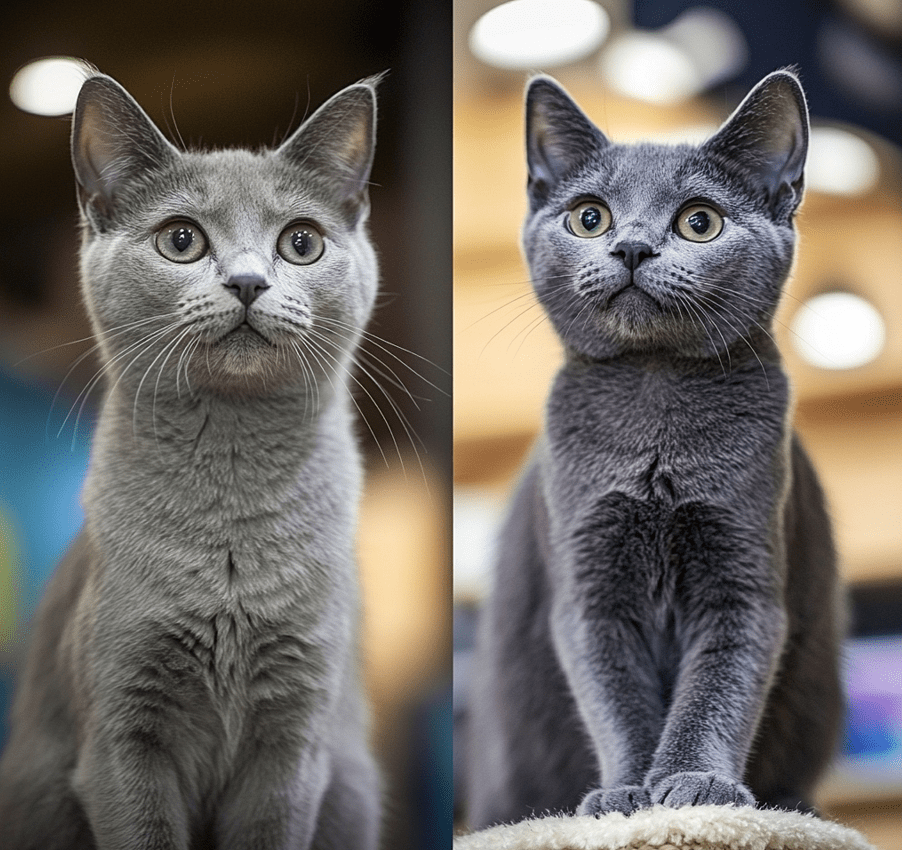
Low-Cost Veterinary Services
Vaccinations and Checkups: Visit low-cost clinics or shelters offering discounted vaccines and wellness exams (often $10–$20).
Spay/Neuter: Check with local rescues for free or subsidized spay/neuter programs.
Flea Prevention: Use vet-recommended topical treatments (around $5/month) instead of collars, which can irritate skin.
Budget Tip: Enroll in pet insurance with low monthly premiums (~$10–$15) to cover unexpected costs. Compare plans online for the best value.
At-Home Health Monitoring
Weight Checks: Use a bathroom scale to monitor your cat’s weight monthly (free).
Grooming Inspections: Check for fleas, lumps, or skin issues during grooming sessions.
Litter Box Observation: Monitor urine and stool for changes, indicating potential health issues.
Budget Tip: Keep a notebook or free app to track health observations, reducing the need for frequent vet visits.
8. DIY Cat Furniture and Decor
Custom cat furniture adds fun and functionality to your home without high costs.
DIY Cat Tree
Materials: Use scrap wood, PVC pipes, or old furniture legs as a base. Wrap with sisal rope (~$10 for 50 feet) for scratching surfaces.
Platforms: Attach wooden boards or crates as perches, covering with carpet scraps or old towels.
Assembly: Secure with screws or glue, ensuring stability.
Budget Tip: Source materials from hardware store clearance sections or community “buy nothing” groups.
Wall-Mounted Perches
Materials: Cut plywood or old shelves into small platforms. Paint with non-toxic paint and attach to walls with brackets.
Cost: ~$5–$10 for materials, depending on what you already own.
Budget Tip: Use leftover paint from home projects to add color, making perches blend with your decor.
Conclusion
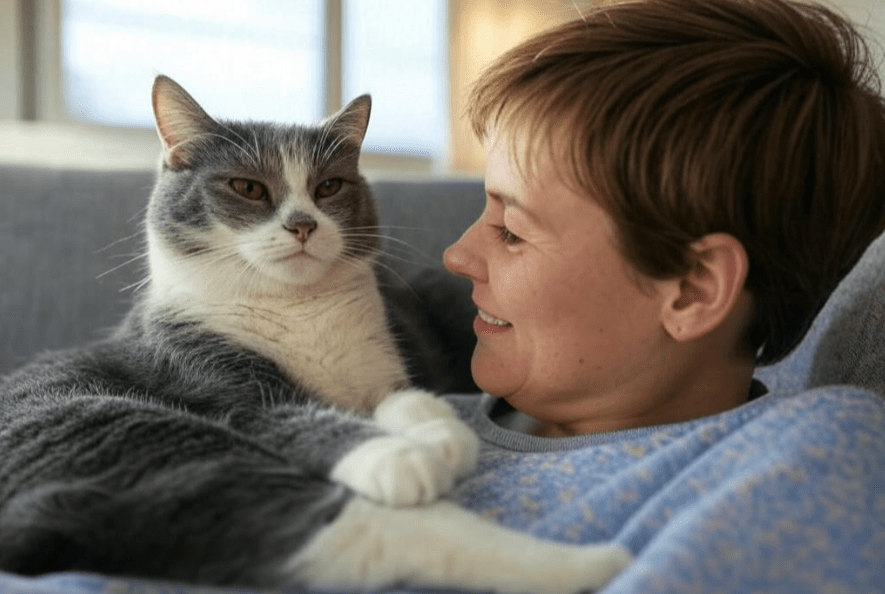
Creating a Domestic Shorthair-friendly home on a budget is entirely achievable with creativity, resourcefulness, and a focus on your cat’s needs. By prioritizing safety, enrichment, grooming, and health with affordable solutions like DIY toys, repurposed furniture, and low-cost litter setups, you can provide a nurturing environment for your Domestic Shorthair without overspending. These budget-friendly tips ensure your cat enjoys a safe, stimulating, and comfortable home, strengthening the bond you share. Start small, incorporate these ideas, and watch your Domestic Shorthair thrive in their budget-friendly paradise.
